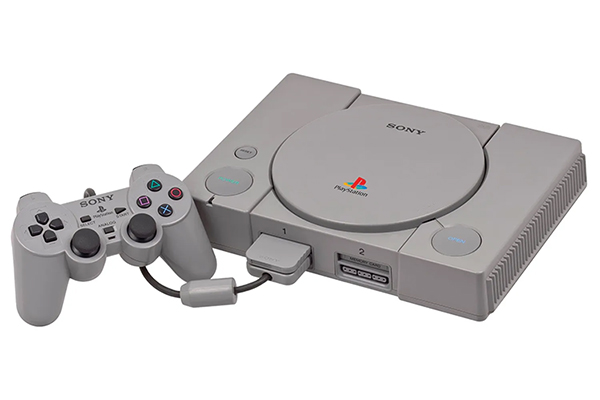PlayStation, 30 years later
- 3 Dec 2024
- Three decades ago, Sony forever changed the course of multimedia entertainment.

The original Sony PlayStation was first available for sale on the 3rd of December in 1994. I always associated its release with 1995, because I first played one in that year. Gamers in Japan got units a full 9 months before anybody else. My friend got one when they were finally available on this side of the Pacific Ocean. We played Street Fighter Alpha at his place one afternoon. I think we played Road Rash that day as well. Did he have one controller or two?
I don’t remember playing against him, but I’m not sure. All I remember is being in awe of the console’s presence. I now remember playing Panzer Dragoon and Virtua Fighter on his also-new Sega Saturn some time later. In fact, we and another friend would do a science-fair project about these consoles that fall. We play games of different genres on the PlayStation and Saturn, and then we evaluate them.
Our teacher approves of our ‘scientific’ report comparing the respective launch titles. She doesn’t approve of our playing them in the classroom during lunch-hour, I later learn.
We get a very good mark for the project, despite our other friend’s lack of contribution. I forget the actual findings of our report, but history has determined the obvious winner. The two companies have had opposite trajectories since that fateful quarter in 1995. Sony is the industry leader 30 years later, whereas Sega has been out of the console race since 2001. The latter is enjoying a resurgence with their Sonic movies and Yakuza games, though.
The PlayStation, more than anything else, had launched video games into the mainstream. I remember the edgy advertising aimed at young adults, the underground-nightclub crowd. I’ve recently learned that ad guru Lee Clow is the mastermind of Sony’s strategy. He’d believed that their intended customers would regress into 17-year-olds while playing games. This insight had helped the PlayStation establish itself as being cooler than Nintendo.
Sony being a large company with major divisions in electronics and entertainment helps. People seem to overlook this fact. The original PlayStation using CDs is no doubt the result of Sony’s larger view of the landscape. Its successors using DVDs and, later, Blu-rays has continued this philosophy. Nintendo, by contrast, has always insisted on using proprietary storage formats.
Besides the PlayStation 3, developing games for Sony consoles has always seemed easier. Wider third-party support across all console generations is the key to Sony’s success. Console-exclusive games are only important to some extent. I’ve bought PlayStation consoles because of specific Metal Gear Solid games. After watching Sony’s 30th Anniversary Thank video, I’ve realized something. I don’t care about their first-party franchises.
Unlike Nintendo, Sony would still be successful without them. I don’t care for The Last of Us, Uncharted, God of War, or Horizon games. I might or might not play the Ghost of Tsushima/Yotei, Astro, or Marvel’s Spider-Man games. In any case, I still enjoy playing games on my PlayStation and browsing the PSN store for sales. Sony is, without a doubt, the antithesis of Nintendo in the world of gaming.
The irony is that Sony and Nintendo had explored developing a console together. I remember reading about CD-based hardware in an issue of GamePro back in the day. As much as I and all gamers are indebted to Nintendo, I’m glad that the project is a footnote in gaming history. At this point, I wonder how which PlayStation iteration will be the final one that I turn off.